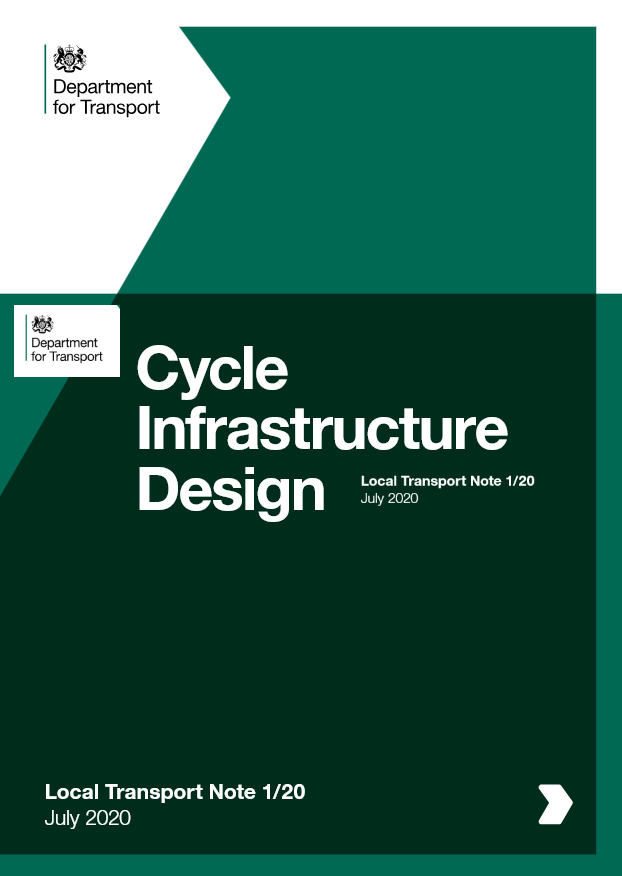Cycle Infrastructure Design (2020) Summary
The original document can be found here
The Cycle Infrastructure Design LTN 1/20 is a detailed guidance document issued by the UK Department for Transport to establish high-quality cycling infrastructure across the country. It aligns with the Cycling and Walking Investment Strategy (CWIS) and aims to integrate cycling as a primary mode of transport. The guidance sets out best practices, technical standards, and funding requirements for local authorities designing cycling networks.
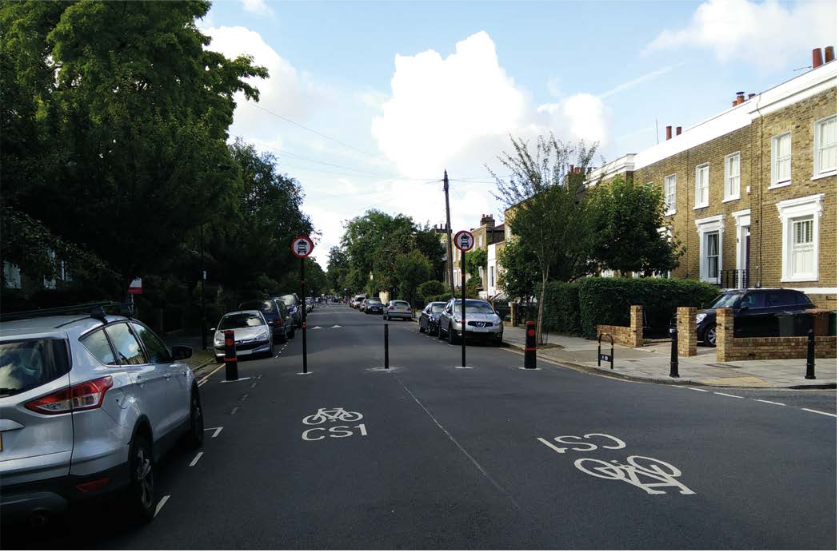
Purpose and Context
- Cycling is expected to play a larger role in transportation, requiring better infrastructure.
- The guidance aims to ensure cycling is treated as mainstream transport rather than an afterthought.
- Government funding for cycling infrastructure is conditional on adherence to this guidance.
- The document replaces previous guidance (LTN 2/08 and LTN 1/12).
Core Design Principles
The guidance outlines five fundamental principles for cycle infrastructure:
- Coherence: Routes must be well-connected, easy to navigate, and consistently high quality.
- Directness: Cycling routes should be as direct as possible, minimizing detours and unnecessary stops.
- Safety: Infrastructure must protect cyclists from high-volume traffic and provide safe crossings and junctions.
- Comfort: Routes should have smooth surfaces, adequate width, minimal obstructions, and gentle gradients.
- Attractiveness: Infrastructure should integrate with the urban landscape, creating inviting spaces for cyclists.
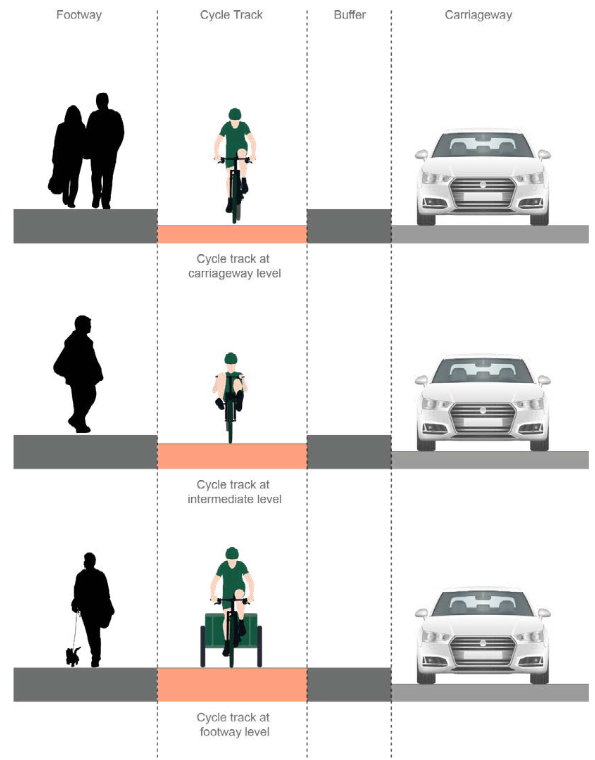
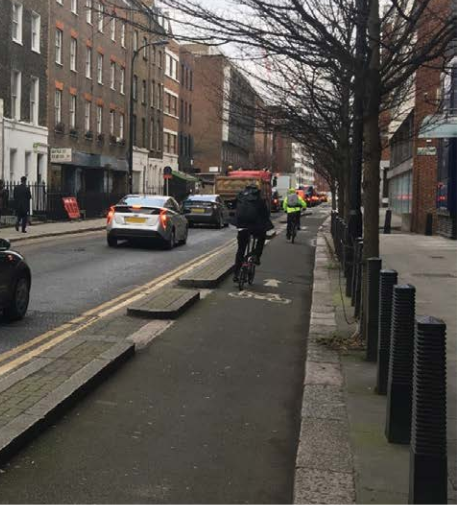
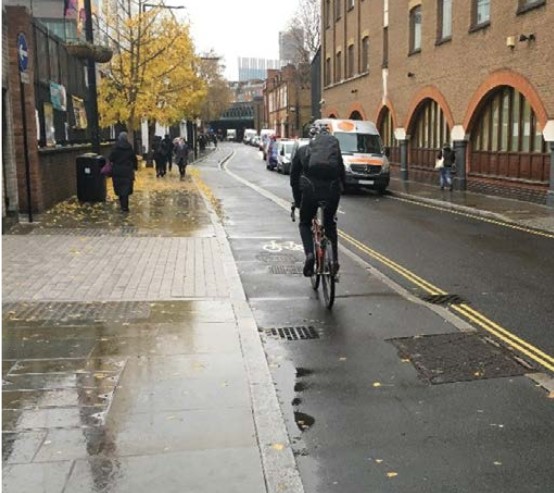
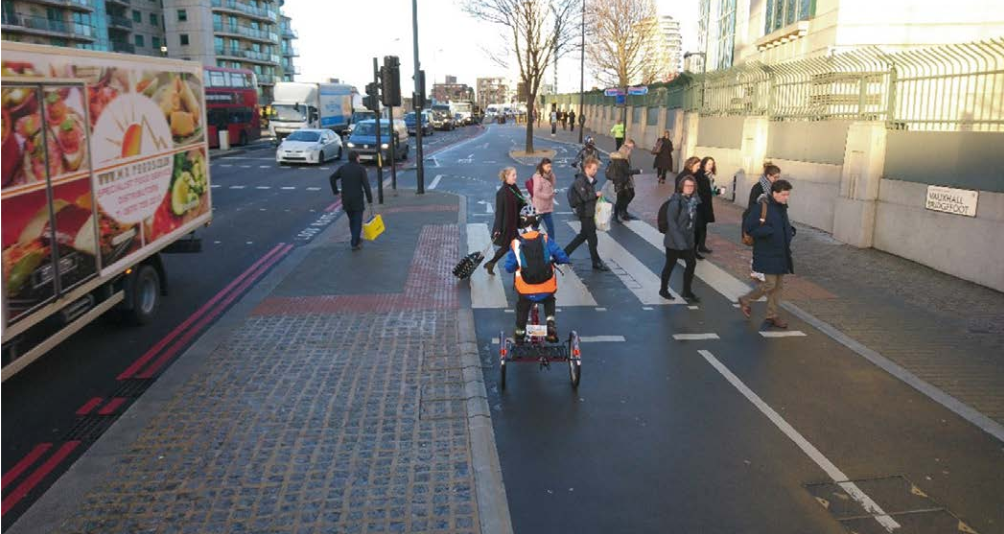
Key Design Guidelines
Dedicated Cycle Space:
- Junctions and Crossings: Cyclists should have dedicated infrastructure at junctions, minimizing conflict with pedestrians and vehicles. Raised tables, separate signals, and protected cycle lanes should be implemented.
- Cyclists must be physically separated from pedestrians and motor vehicles on busy streets. Shared-use paths should be avoided in high-traffic areas.
- Low-Traffic Routes: Quiet streets can be used for cycling if traffic reduction measures, such as modal filters, are in place to prevent rat-running.
- Cycle Parking and Facilities: Secure and accessible cycle parking should be provided at key destinations, including transport hubs, shopping areas, and residential zones.
- Surface Quality and Maintenance: Roads and cycle tracks should be well-maintained, with smooth, durable surfaces free of potholes and debris. Regular sweeping and winter maintenance are essential.
- Signage and Wayfinding: Clear, legible signs should be used to guide cyclists along routes, especially at decision points and major intersections.
Implementation and Compliance
- Integration with Other Transport Modes: Cycling infrastructure should be incorporated into public transport networks, with convenient access to train stations, bus stops, and park-and-ride facilities.
- Funding Requirements: To secure government funding, cycling schemes must meet the Cycling Level of Service (CLoS) and Junction Assessment Tool (JAT) criteria, ensuring a minimum quality standard.
- Stakeholder Engagement: Authorities must work with local communities, businesses, and cycling organizations to design user-friendly and widely accepted cycling networks.
- Monitoring and Evaluation: Regular assessments should be conducted to ensure infrastructure remains safe, efficient, and aligned with best practices. Authorities must be prepared to adjust designs based on real-world usage and feedback.
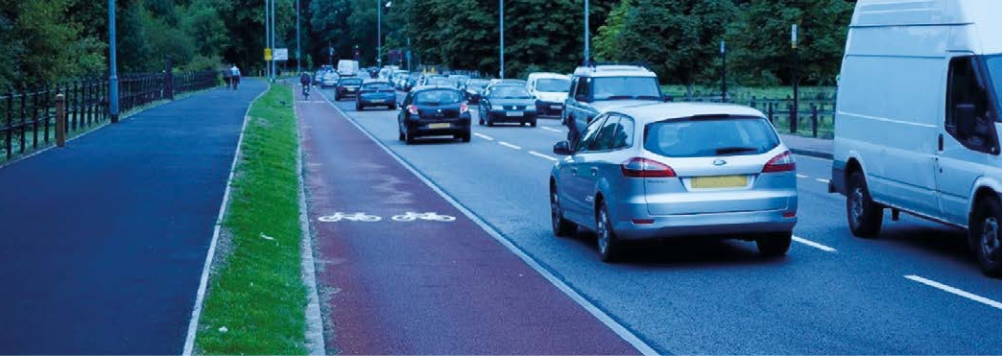
View more summarised government documents here

